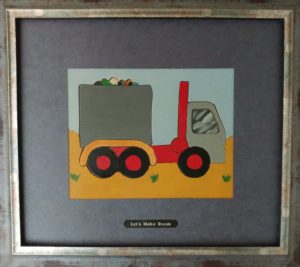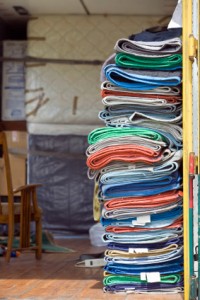My client, Olivia, and I were standing in the family room of her mother’s home knee deep in moving boxes and overstuffed yard bags, packing items she had decided to get rid of when I came across a small plastic grocery bag.
Olivia (not her real name) and I had been working together for several sessions and by now we’d become well acquainted with one another. I have been exceedingly lucky and grateful to have worked with many wonderful people since launching LET’S MAKE ROOM, Olivia is one of them.
She found me through a local consignment store where she had gone to sell some items belonging to her mother who had recently died after a long illness. Olivia had spent the last seven years seeing to her mother’s care at the home she shared with her with a single-minded devotion that spoke to the kind of person I was just beginning to know.
A woman of enormous grace and compassion, Olivia had given every ounce of her being to the care of her mother so that by the time she was ultimately relieved of this responsibility, she had little left, mentally or physically, to tackle the next phase she had set out to accomplish – making a home for herself in the home that had once been her mother’s.
She told the owner of the local consignment shop about her plight, about the overwhelming work ahead of her and that was how she first learned of me.
At our first meeting, Olivia stated her objectives: Empty the house of items she felt others would enjoy more than she wanted to keep them as quickly as possible to make room for the life she needed to continue on her own.
We agreed on a plan. I would work with her to help choose what items would go, pack everything up and arrange to have it all picked up by a local estate liquidation service. The job involved the sorting, packing and organizing of well over 100 boxes and bags of items once belonging to her mother as well as other household items. I arranged for the service, a company called Remoovit, to pick up everything including furniture Olivia no longer wanted. We were just a few days away from having the estate liquidator’s 25′ truck arrive and we were nearing the end of the process when I found a small white grocery bag tucked into a box of toys in her family room closet.
I opened the bag and poured the contents on to the large folding table we were using as a workstation. We both stopped and looked at the still unrecognizable items, about a dozen brightly colored pieces of wood. Then I realized there was something else inside the bag. I pulled it out. “It’s a puzzle!”
Our attention immediately shifted to these colorful shapes on the table and together, just like two children, we excitedly began arranging the pieces. It took a minute or two and then there it was: An adorable red truck with big black wheels slightly overloaded with an array of items in different colors. We burst into loud shrieks of laughter as the irony hit us simultaneously. It was the future. At least the immediate future. What had once been a child’s toy, most likely hers or her mother’s, saved and long hidden from view, had now become real. “I’m going to have it framed,” she said.
As an organizer who has seen far too many unrealized projects become clutter, I felt obligated to press her on this decision – “It it worth your time and money?”
“Absolutely,” she replied.
A few days passed. The estate liquidator’s truck came and went, filled with the boxes we had packed on their way to new and as yet unknown owners. I moved on to other projects and other clients until one day about a week later I got a call from Olivia.
“Can you come over? I have something for you.”
I arrived at her house curious about what she had for me. Perhaps she had neglected to include an item she wanted sold or donated? I walked into her living room and she handed me a package wrapped in brown paper. I unwrapped it and there, behind glass, beautifully framed and mounted, with the words “LET’S MAKE ROOM’ engraved on a little metal plaque below, was the little red pickup truck.
“I made it for you,” Olivia said with a wide grin. I looked up at her. My eyes widened and then of course, began to tear up. “Thank you,” was all I could say. It was the best endorsement of my work I’ve ever received.
It hangs in my home office. When I look at it, I think of Olivia and the gift she gave me just by working with her: the realization of and how much I love what I do.










